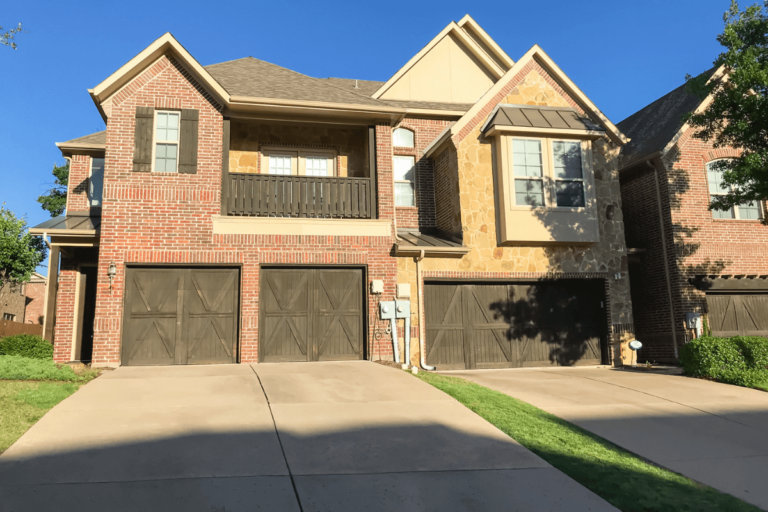Velocity Banking Strategy: Is It The Next Best Early Mortgage Payoff Strategy?

The velocity banking strategy is one of the newest strategies gaining notoriety while some approaches have more legitimacy than others. Several strategies scattered across the internet and social media claim to be the best method for paying off your mortgage early.
The velocity banking strategy was first proposed through a YouTube channel as a viable option for borrowers looking to pay off their mortgage early. It even goes as far as to state that people can use this methodology to pay off a traditional 30-year mortgage in as little as seven years.
Considering that 87% of home buyers finance their home purchases, it’s no surprise that this strategy is gaining a lot of attention. Nevertheless, some skeptics consider using velocity banking a gimmick, citing numerous risk-layered drawbacks.
If you are intrigued by what the velocity banking strategy offers and think you can apply it effectively, it may be a practical means to an end (owning your home free and clear). However, before making any rash financial decision, you must fully understand how the velocity banking strategy is supposed to work and some of its common pitfalls.
How Does the Velocity Banking Strategy Work?
The fundamental velocity banking concept is to allocate your income across various debt tradelines to take advantage of minute price differences, also commonly known as arbitrage.
Sometimes velocity banking is also known as the “HELOC strategy” because it typically involves opening a new home equity line of credit (HELOC) to help you focus your disposable income toward paying down your primary mortgage.
The ultimate goal is to put as much money as possible toward the principal balance of your primary home mortgage. This goal will allow you to pay off your home in a shorter time while saving money in amortized interest.
Many borrowers aren’t aware that most of the interest you pay on a traditional mortgage is skewed toward the first couple of years, thereby tapering off over your remaining term.
In theory, allocating more of your income towards reducing your mortgage’s principal balance will allow you to pay less money overall. But, first, let’s look at how a velocity banking scenario would work in practice.
Step #1: Obtain a New Mortgage
The first step to using any early mortgage payoff strategy is to need a primary mortgage that you are looking to pay off. Historically, the 30-year fixed-rate mortgage has been a popular option among consumers.
Let’s assume you have a $200,000 mortgage with a 30-year term and a fixed interest rate of 5%. So your monthly principal and interest payment come out to around $1,074 each month.
If you made your regular monthly payment on time for the entire life of your loan, you would end up paying your lender about $186,511 in interest alone.
While rates were hovering below 5% for several years, recent rate hikes and other market pressures have made financing a home much more expensive. So let’s see how the velocity banking method can lower your total interest paid by paying off your mortgage faster.
Step #2: Open a New Home Equity Line of Credit (HELOC)
Once you have a primary home mortgage, the next step in the velocity banking strategy is to open a new home equity line of credit (HELOC).
A HELOC works like a credit card in that you have a credit limit that you can access and pay down as you need it. However, a key difference is that a HELOC uses your home as collateral to secure the loan, unlike a credit card. The bank uses home equity to determine the cash value of the loan.
It’s also important to understand that HELOCs typically have a variable interest rate, meaning your rate and subsequent payment could change based on changing market conditions.
Traditionally homeowners use HELOCs to pay for significant expenses such as home improvement projects or a child’s college tuition. Still, the velocity banking strategy requires you to utilize it atypically.
Step #3: Pay Your Primary Mortgage Using Your HELOC
Now here is where the velocity banking strategy starts to set in. Once you have both mortgages open, you will use your HELOC to pay down the principal balance of your primary mortgage in large chunks.
The extra payments mean paying less interest on that loan by making significant principal reductions on your primary mortgage.
For example, making a one-time $10,000 principal payment toward your $200,000 mortgage would reduce your total interest by roughly $31,167. It would also mean paying your mortgage much earlier.
Step# 4: Quickly Pay Down Your HELOC Balance To Zero
Using your HELOC to pay down your primary mortgage is like rebalancing your debt roundabout. You are essentially shifting the obligation into another product. You will still owe the $10,000 payment you made on your primary mortgage as an outstanding balance on your home equity line of credit.
However, the trick to this strategy is leveraging the revolving aspect of your HELOC. As you pay back your HELOC (assuming you are not making just the interest-only payment), you free up your credit that you can again put to use.
For this method to be successful, it’s essential to pay your HELOC back down to zero as quickly as possible, using whatever disposable income you have available.
Proponents of this strategy champion using a credit card for your monthly living expenses and then paying it off at the end of the month using your HELOC before the balance becomes reported to the credit bureaus and before the charges begin to accrue interest.
Then it’s all about rinsing and repeating the process until you fully pay off the primary mortgage. While this process may work for some, there are a lot of risk factors to consider before attempting this strategy.
Is Velocity Banking a Legitimate Strategy for Paying Off Your Primary Mortgage Early?
Yes, the velocity banking early mortgage payoff strategy can be an effective way to pay off your mortgage faster. However, this strategy is not for everyone (especially the faint of heart). Here are a few assumptions and risk factors you should consider before implementing this strategy.
The first underlying assumption is that paying off your primary mortgage early is the best financial decision. Yet, more and more financial experts have argued that paying off your mortgage early isn’t always the best financial strategy.
First, you can lose out on critical tax deductions that lower your tax liability. Second, you could potentially put the funds to better use than paying down your mortgage by investing in alternative investment vehicles that earn a greater return rate than your interest savings.
Another reason the velocity banking method may not work for everyone is because it requires you to earn more money than you spend each month. Not only that, but you must stick to the process; otherwise, you could wind up in more debt.
The process is overly complicated, meaning one mistake could punish your finances. Also, keep in mind that HELOCs have variable interest rates, meaning that if rates go up, you may wind up paying more.
Lastly, this method may work for some but not others due to credit and collateral constraints. For example, if you have a lower credit score or no available equity in your home, you may not qualify to open a new HELOC in the first place, which is an essential step in the process.






